Fatsia Japonica: [Characteristics, Cultivation, Care and Disadvantages]
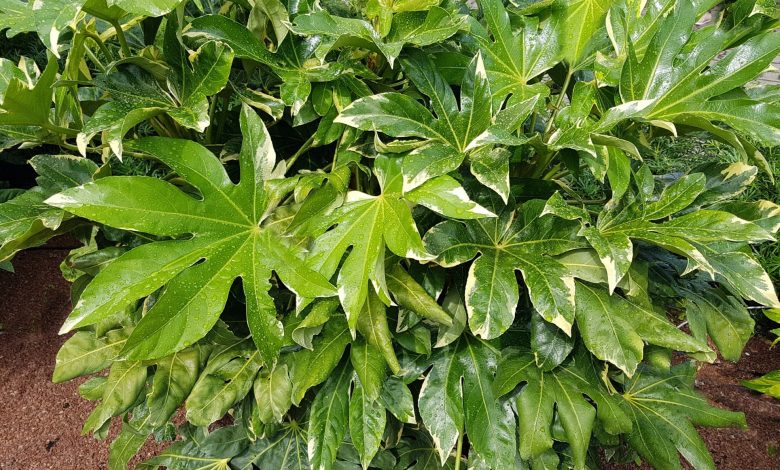
Important points when sowing a Fatsia japonica:
- When? Fatsia japonica should be sown from seed in spring or from cuttings in early spring or late summer.
- Where? Fatsia japonica can be grown as an indoor plant, in a greenhouse, on terraces and balconies.
- How do we water? The fatsia japonica plant should be watered frequently during the summer and its leaves should be sprayed with lime-free water if it is very hot.
- How often do we water? It should be watered at least twice a week in the summer season, and just once in winter just to maintain humidity and not flood.
- What care does it require? The care of the fatsia japonica plant is very simple, which is why it is very attractive for people who do not have gardening knowledge.
- What pests and diseases affect you? The fatsia japonica is susceptible to attack by various insects such as spider mites, mealybugs and aphids.
What characteristics does the fatsia japonica plant have?
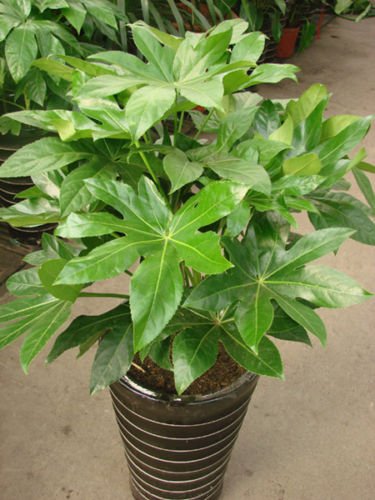 The fatsia japonica, also known by the common names of Aralia and Japanese Aralia, is a shrubby plant characterized by its large, very green leaves.
The fatsia japonica, also known by the common names of Aralia and Japanese Aralia, is a shrubby plant characterized by its large, very green leaves.
Belonging to the Araliaceae family, it is a plant that originates from Japan and China.
The fatsia japonica can reach up to 4 meters planted outdoors, while it does not exceed one meter in height when planted in pots.
It has thick upright stems and is a plant that is branched from the very base.
The leaves of fatsia japonica are located on long petioles, they are perennial and palmately lobed (5 to 9 lobes), that is, they are distributed as if it were an open hand. The flowers are borne in the form of umbrellas above the leaves, they are rather small in size and have a white or cream colour.
After the flowers, the drupe-shaped fruits with a dark blue color appear. Flowering and fruiting of fatsia japonica only occurs when the crop is located outdoors.
Another of its important characteristics is that it can be grown both indoors and in outdoor gardens.
When to sow fatsia japonica?
Fatsia japonica should be sown from seed in spring or from cuttings in early spring or late summer.
Where to plant fatsia japonica?
Fatsia japonica can be grown as an indoor plant, in a greenhouse, on terraces and balconies. They are also used as isolated specimens or in bushy groups in the garden.
How do we water the fatsia japonica?
The fatsia japonica plant should be watered frequently during the summer and its leaves should be sprayed with lime-free water if it is very hot.
How often do we water the fatsia japonica?
Experts recommend watering fatsia japonica frequently to keep the substrate moist. It should be watered at least 2 times a week in the summer season.
And just once in winter just to maintain humidity and without flooding. During the winter, and especially if the fatsia japonica is outdoors, watering should be reduced.
How to sow a fatsia japonica step by step?
- Select the seeds of the fatsia japonica, subjected to a rooting process and/or cut a cutting from a healthy and robust plant.
- Select a container that has drainage capacity.
- Fill with universal substrate for green flowering plants.
- Water abundantly and frequently without flooding.
- Locate in a place with good light or partial shade.
- Pay once or twice a month with fertilizers for green plants.
What care does the fatsia japonica need?
The care of the fatsia japonica plant is very simple, which is why it is very attractive for people who do not have gardening knowledge. The substrate for the cultivation of fatsia japonica should be a universal substrate for garden plants or a commercial substrate if it is grown indoors.
The plant needs exposure to subdued light or semi-shade and is highly adaptable to both temperature and light. During the winter the fatsia japonica requires a rest with a temperature of 10-13º C.
A fertilizer can be supplied every two or three weeks with mineral fertilizers. Prune lightly and only to keep compact, in early spring.
What pests and diseases affect fatsia japonica?
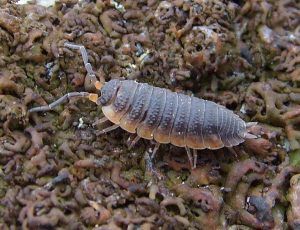 Fatsia japonica is susceptible to attack by various insects such as spider mites, mealybugs, and aphids.
Fatsia japonica is susceptible to attack by various insects such as spider mites, mealybugs, and aphids.
If the environmental humidity and ventilation are not adequate, fatsia japonica can be affected by bacteria that can destroy the crop.
Aphids are insects that attack the underside of fatsia japonica leaves, producing yellow spots, deformations and bites.
Mealybugs affect almost all ornamental plants by nailing their sucking beak on leaves, stems and fruits and drawing the sap from the stems and flowers of fatsia japonica.
The red spider is a plague that recurrently affects indoor plants and appears when the environment is very dry, causing yellow spots and causing them to fall.
Among the bacteria that can attack fatsia japonica are Pseudomonas and among fungi, Alternariae. Pseudomonas cause fatsia japonica leaf rot, so it is recommended to apply a chemical product to eliminate it completely.
For their part, alternarias produce circular yellow spots on the plant. The most effective solution against alternaria consists in avoiding the accumulation of water in the leaves, eliminating those that are damaged, and applying specific fungicides.
Bibliographic references
- NECK ROT AND ROOTS OF ARALIA (Fatsia japonica) BY Fusarium solani1, L Guibu, RL ZAPATA – Magazine of the Faculty of Agronomy…, 1992 – core.ac.uk
- Evaluation of five bactericides, to attenuate necrotic spots caused by Pseudomonas sp, in leaves of aralia (Fatsia japonica), and services performed in…, PR García Zamora – 2011 – repository.usac.edu.gt
- Araliaceae, V Sosa – 1979 – inecol.edu.mx
- Potential distribution of species of the Araliaceae family of the Madidi Region, JMIR López – 2012 – mobot.org
- Araliaceae endemic to Peru, B León – Peruvian Journal of Biology, 2006 – scielo.org.pe
- Araliaceae, AR López Ferrari – 1989 – sidalc.net
- Environmental conditions in ornamental plants, I CERMENO – miteco.gob.es

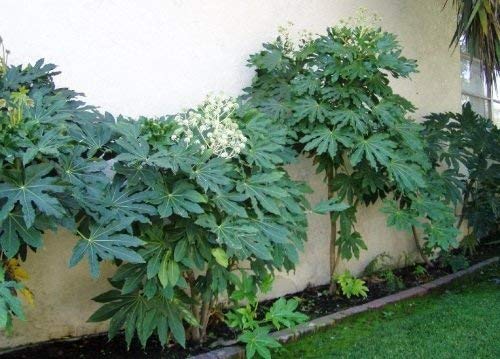
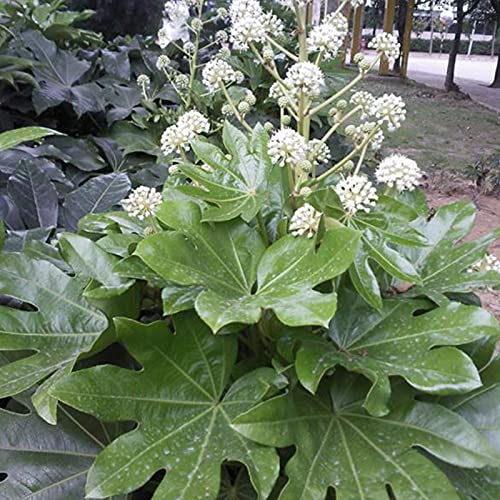
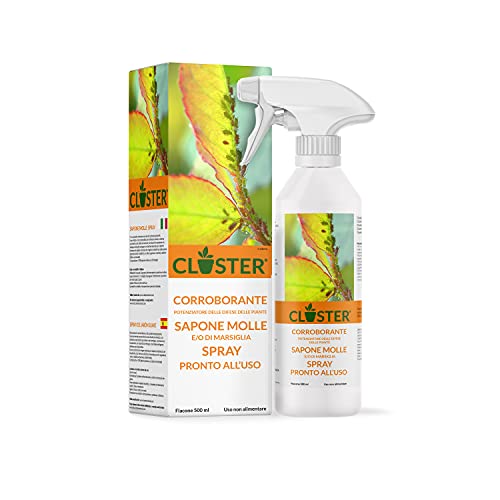
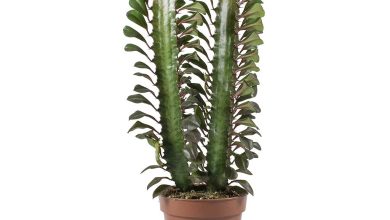

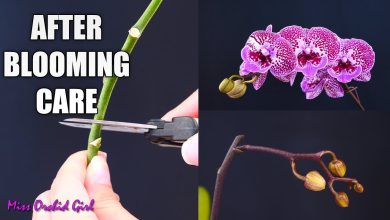
![Photo of Citrus Miner: [How to Identify and Fight It]](https://www.complete-gardening.com/wp-content/uploads/2022/08/citrus-miner-how-to-identify-and-fight-it-390x220.jpg)